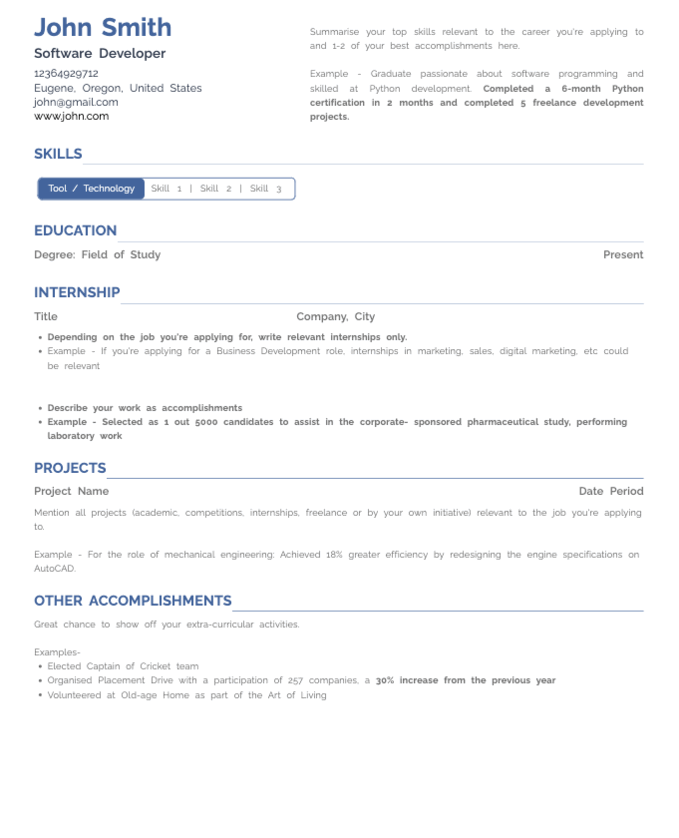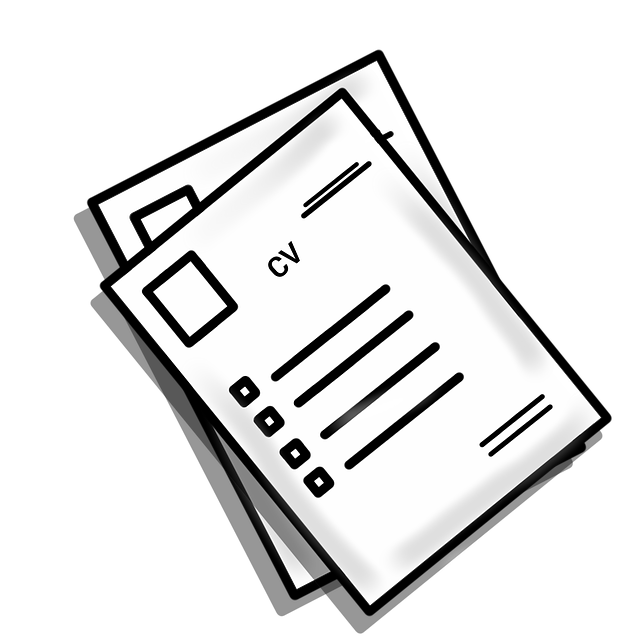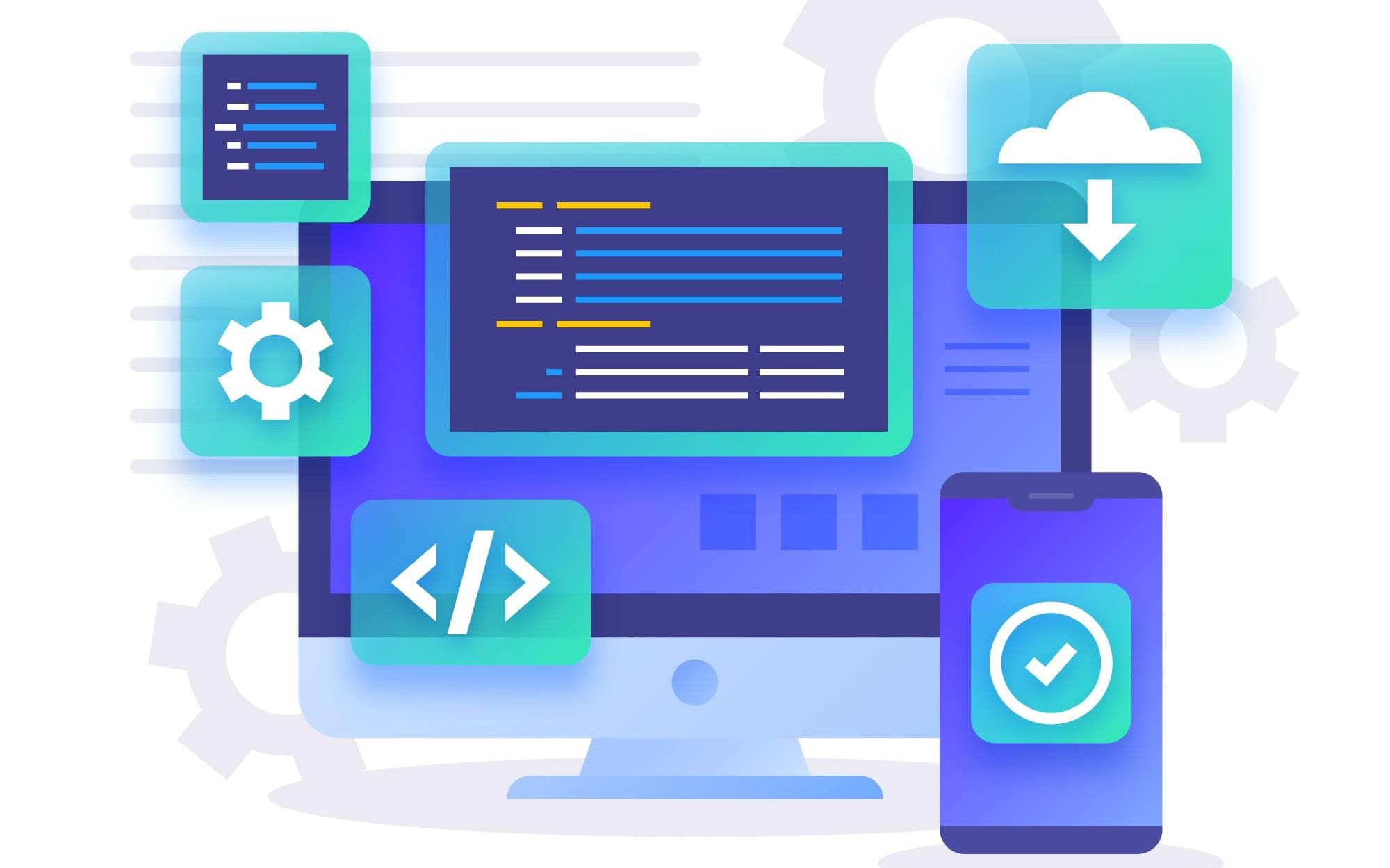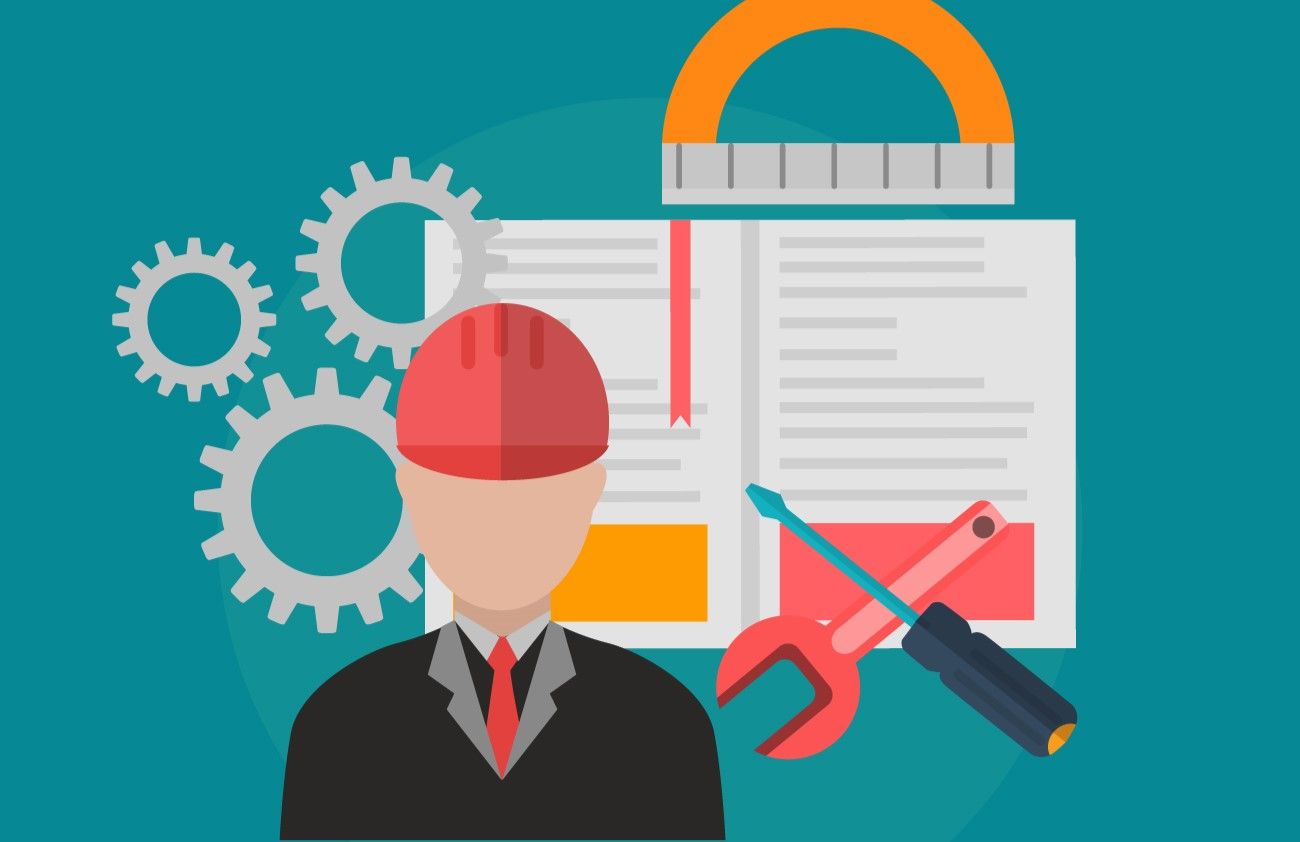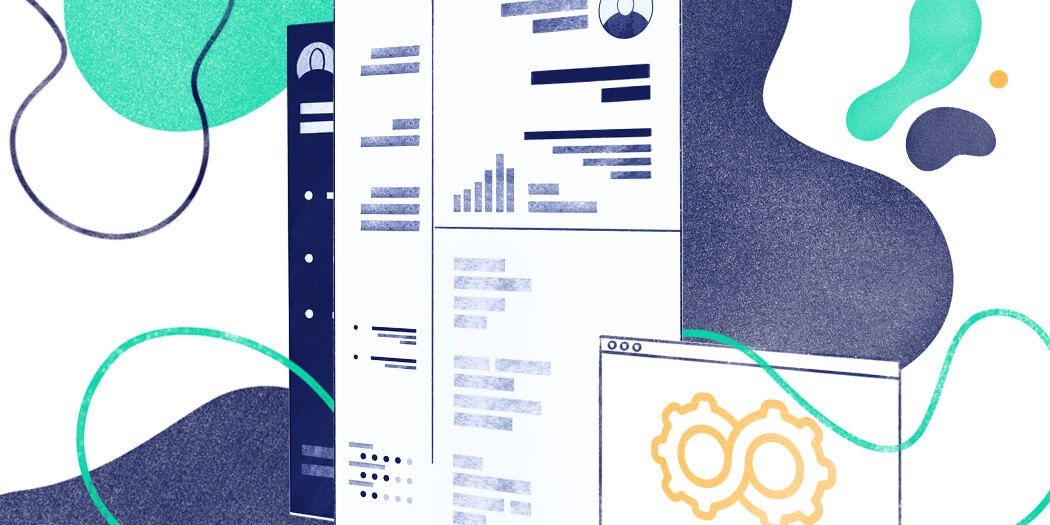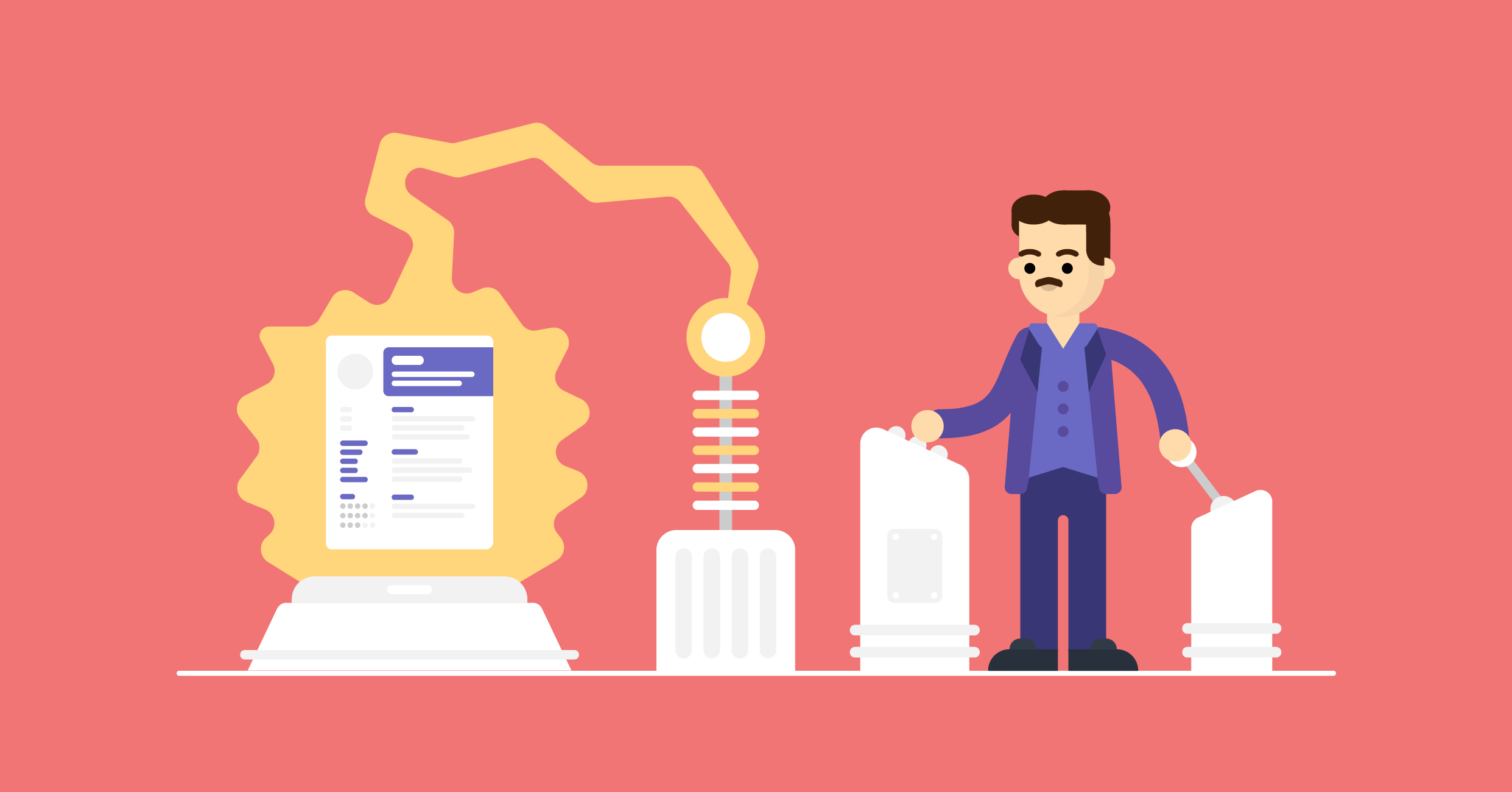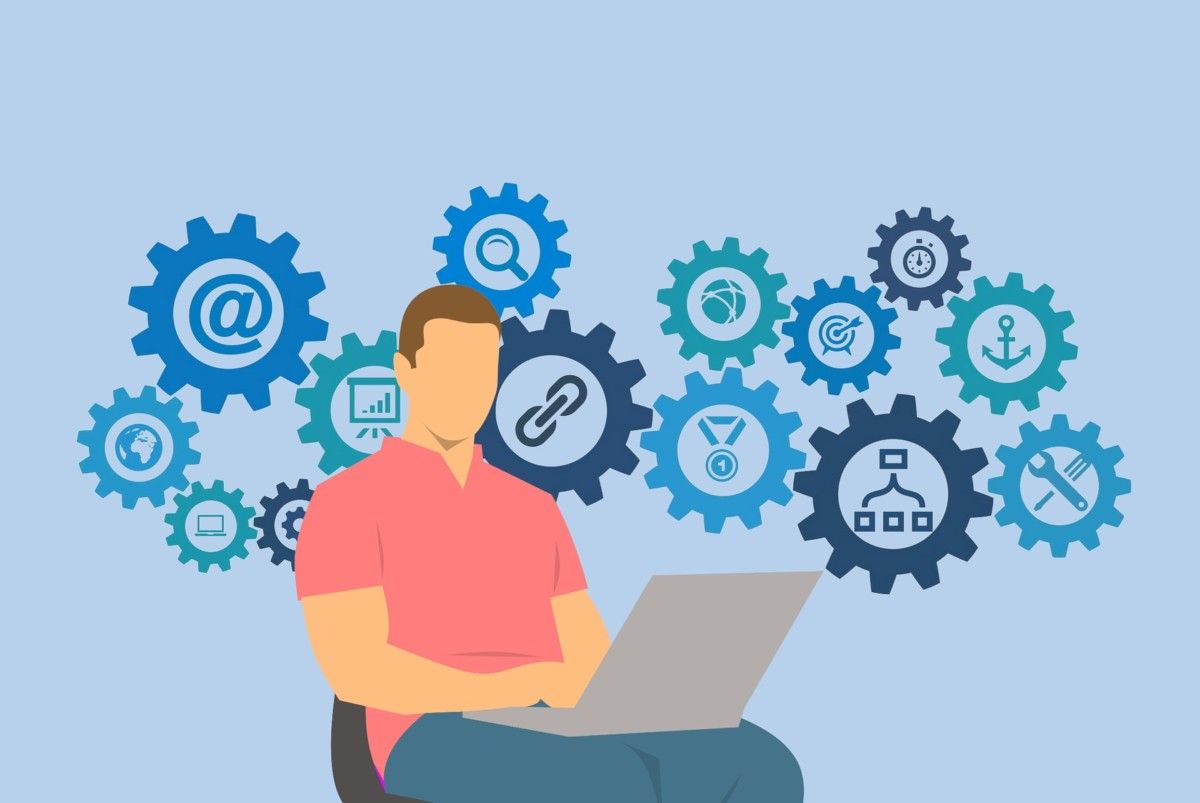10+ Tricks to Build a Resume For Desktop Support Engineer
5 Min read

Is it tough to build a resume for desktop support engineer jobs?
‘Yes’ and ‘No’. We mean, ‘Yes’, it is a time-consuming process, ‘Not’ different from building a resume of any other profile.
However, you do not have to worry because here, you will get every essential step to crafting a professional resume for desktop support engineer jobs.
We are answering the following fundamental resume-building questions here targeting the desktop support engineer jobs:
- What are the fundamental duties of a desktop support engineer?
- Is it important to read the desktop support engineer job description?
- How to build a professional resume for desktop support engineer jobs?
- Is sending a cover letter with the desktop support engineer resume important?
Resume building will take time if you are starting from scratch. Hence, if you want a resume for desktop support engineer jobs quickly, try HyreSnap Online Resume Builder.
It is a powerful AI tool that will help you frame an ATS-friendly resume for desktop support engineer jobs in minutes.
As of now, let us move on and get insights into the resume-building process for desktop support engineer jobs:
The responsibilities of a desktop support engineer can vary depending on the organisation and the specific role. However, here are some fundamental responsibilities typically associated with this position:
- Technical Support: Providing technical assistance and support to end-users for hardware, software, and network-related issues. This involves troubleshooting and resolving problems promptly and efficiently.
- Hardware and Software Installation: Installing, configuring, and maintaining computer hardware, peripherals, and software applications. This includes setting up new devices, upgrading existing systems, and ensuring compatibility and functionality.
- System Maintenance: Performing routine maintenance tasks such as system updates, patches, and security enhancements. This also involves monitoring system performance, identifying issues, and taking appropriate actions to optimise performance and stability.
- User Support and Training: Assist end-users in effectively utilising computer systems, software applications, and other technology tools. Providing training and guidance on basic operations, troubleshooting techniques, and best practices.
- Incident Management: Managing and resolving IT incidents reported by end-users, either through direct contact or a ticketing system. Documenting incidents, troubleshooting steps, and solutions to maintain a knowledge base for future reference.
- Remote Support: Providing remote assistance to users who cannot resolve issues independently. Using remote access tools to diagnose and troubleshoot problems, as well as guide users through the resolution process.
- Security and Data Protection: Ensuring the security and confidentiality of user data and systems. Implementing and enforcing security measures, such as antivirus software, firewalls, and access controls. Conducting regular data backups and disaster recovery procedures.
- Documentation and Reporting: Maintaining accurate records of incidents, service requests, and resolutions. Documenting standard operating procedures, troubleshooting guides, and technical documentation for future reference and knowledge sharing.
- Collaboration and Communication: Collaborating with other IT teams, such as network administrators, system administrators, and developers, to resolve complex issues and implement system improvements. Communicating effectively with end-users, providing updates and progress reports on ongoing issues.
- Continuous Learning and Skill Development: Keeping up with technological advancements and industry trends through self-study, training programs, and certifications. Enhancing technical skills and knowledge to provide effective support and stay abreast of emerging technologies.
It's important to note that the responsibilities of a desktop support engineer may vary based on the organisation's size, industry, and specific requirements. The role may also encompass additional responsibilities depending on the organisation's IT structure and the complexity of the systems being supported.
Reading a job description properly will help you during the entire recruitment process. Initially, it will help you know all the position requirements. Then, it will give you some technical terms that you can add to your resume to enhance its technical strength.
To explain it better, we have listed an example job description for desktop support engineer jobs below. We have highlighted the technical terms mentioned in this job description. You can follow this process, pick keywords from your job description, and add them to your resume.
Example Job description for Desktop Support Engineer Jobs:
RTY Technologies, a leading technology solutions provider, is seeking a highly skilled and motivated Desktop Support Engineer to join our team in Bengaluru. As a Desktop Support Engineer, you will play a crucial role in providing technical support and ensuring the smooth operation of our computer systems and network infrastructure. You will be responsible for resolving end-user technical issues, installing and maintaining hardware and software, and providing excellent customer service.
Responsibilities:
>Provide technical support to end-users, addressing hardware, software, and network-related issues promptly and efficiently.
>Install, configure, and maintain computer hardware, peripherals, and software applications according to company standards and guidelines.
>Perform routine maintenance tasks, including system updates, patches, and security enhancements, to ensure optimal performance and stability.
>Assist end-users in utilising computer systems, software applications, and technology tools effectively, providing guidance and training as needed.
>Manage and resolve IT incidents reported by end-users, documenting incidents, troubleshooting steps, and solutions in a timely manner.
>Provide remote support to users, diagnosing and troubleshooting problems through remote access tools and guiding users through the resolution process.
>Implement and enforce security measures to ensure the confidentiality and integrity of user data and systems, including antivirus software, firewalls, and access controls.
>Maintain accurate records of incidents, service requests, and resolutions in the ticketing system, ensuring proper documentation and knowledge sharing.
>Collaborate with other IT teams, such as network administrators and system administrators, to resolve complex issues and implement system improvements.
>Communicate effectively with end-users, providing regular updates and progress reports on ongoing issues and delivering excellent customer service.
Requirements:
>Bachelor's degree in Computer Science, Information Technology, or a related field.
>Proven experience in a similar role as a Desktop Support Engineer or in IT support.
>Strong knowledge of computer hardware, operating systems, software applications, and network protocols.
>Excellent troubleshooting skills and the ability to diagnose and resolve technical issues effectively.
>Experience in installing, configuring, and maintaining computer hardware, peripherals, and software.
>Familiarity with security principles and best practices, including antivirus software and firewalls.
>Proficient in remote support tools and techniques.
>Strong customer service and communication skills, with the ability to explain technical concepts to non-technical users.
>Ability to work independently and as part of a team, with excellent time management and organisational skills.
>Relevant certifications, such as CompTIA A+, Microsoft Certified Desktop Support Technician (MCDST), or similar, are a plus.
By following these steps, you can create a compelling resume highlighting your qualifications and increasing your chances of securing your dream job.
Start by collecting all the necessary information and documents for your resume. This includes your personal details, contact information, educational background, certifications, work experience, and any relevant projects or achievements. Having these details ready will streamline the resume-building process.
Thoroughly analyse the job description of the desktop support engineer position you are applying for. Pay attention to the specific skills, qualifications, and responsibilities mentioned. Understanding the employer's requirements will enable you to tailor your resume accordingly and highlight the most relevant information.
Choose a professional resume format that is clean, organized, and easy to read. The chronological or combination format is commonly used for technical roles like desktop support engineering. These formats emphasize your work experience and skills, respectively. Select a format that best highlights your strengths and aligns with the job requirements.
Structure your resume with the following sections:
- Resume Header
- Contact Information
- Profile Title
- Resume Summary/Objective
- Key Skills
- Technical Skills
- Work Experience
- Educational Details
- Certifications
- Awards
- Additional Information
As a desktop support engineer, technical skills play a vital role in your resume. Dedicate a separate section to outline your key technical skills. Include specific technologies, operating systems, software applications, hardware knowledge, scripting languages, and any other relevant skills that align with the job requirements.
When describing your work experience and achievements, use concise bullet points to highlight your responsibilities and accomplishments. Start each bullet point with an action verb and focus on measurable outcomes, such as successfully resolving technical issues, implementing system upgrades, or improving response times.
Incorporate relevant technical keywords and industry-specific terms throughout your resume. This will help your resume pass through applicant tracking systems (ATS) and increase visibility. Additionally, quantify your achievements with important metrics. For example, mention the number of systems supported, reduction in response time, or percentage increase in customer satisfaction.
Craft a compelling resume summary or objective statement that captures the attention of hiring managers. Use this section to concisely overview your experience, skills, and goals. Tailor the summary to align with the specific requirements of the desktop support engineer role you are applying for.
It is the last and most important part of your resume-building process. We recommend taking a halt after building your resume and then start proofreading it. Resume proofreading will help you rectify small mistakes that can negatively affect your resume performance.
You can refer to the below-given resume example while building your resume for desktop support engineer jobs:
Example Resume For Desktop Support Engineer Jobs:
Sumit Sharma
Ph.- 09987654321
Email- sumit@hyresnap.com
LinkedIn- https://www.linkedin.com/in/sumit-sharma-012b0647/
Objective:
Highly skilled and motivated Desktop Support Engineer with [X] years of experience in providing technical assistance and resolving hardware, software, and network-related issues. Seeking to contribute my expertise in desktop support and problem-solving abilities to RTY Technologies in the role of Desktop Support Engineer.
Skills:
- Operating Systems: Windows 10, macOS, Linux
- Software Applications: Microsoft Office Suite, Adobe Creative Cloud
- Hardware Knowledge: Desktops, laptops, printers, scanners
- Networking: TCP/IP, DNS, DHCP, LAN, WLAN
- Troubleshooting: Hardware, software, network connectivity issues
- Remote Support Tools: TeamViewer, AnyDesk, Remote Desktop
- Customer Service: Effective communication, problem-solving, and interpersonal skills
Work Experience:
Desktop Support Engineer
[XYZ Technologies], [Bengaluru, KA]
[2021 - Present]
- Provided technical support to end-users, addressing hardware, software, and network-related issues promptly and efficiently.
- Installed, configured, and maintained computer hardware, peripherals, and software applications according to company standards and guidelines.
- Conducted routine maintenance tasks, including system updates, patches, and security enhancements to ensure optimal performance and stability.
- Assisted end-users in utilising computer systems, software applications, and technology tools effectively, providing guidance and training as needed.
- Managed and resolved IT incidents reported by end-users, documented incidents, troubleshooting steps, and solutions in a timely manner.
- Provided remote support to users, diagnosing and troubleshooting problems through remote access tools and guiding users through the resolution process.
- Implemented and enforced security measures to ensure the confidentiality and integrity of user data and systems, including antivirus software and firewalls.
- Maintained accurate records of incidents, service requests, and resolutions in the ticketing system, ensuring proper documentation and knowledge sharing.
- Collaborated with other IT teams, such as network administrators and system administrators, to resolve complex issues and implement system improvements.
- Communicated effectively with end-users, providing regular updates and progress reports on ongoing issues and delivering excellent customer service.
Projects/Achievements:
- Successfully migrated the company's systems from Windows 7 to Windows 10, ensuring minimal downtime and user disruption.
- Implemented a comprehensive backup and disaster recovery solution, reducing data loss risks and improving business continuity.
- Led training sessions for end-users, enhancing their knowledge of computer systems, software applications, and best practices.
Education:
Bachelor of Science in Computer Science
[Bengaluru Technical University], [Bengaluru, KA]
[2016-2020]
Certifications:
- CompTIA A+
- Microsoft Certified Desktop Support Technician (MCDST)
Additional Information:
Languages: English (Fluent), Hindi (Fluent)
Professional Affiliations: Member, CompTIA Association
References:
Available upon request
It is generally important to send a cover letter along with your resume when applying for a desktop support engineer job. While some employers may not explicitly request a cover letter, including one can enhance your application performance and set you apart from other candidates.
Building a strong cover letter for a desktop support engineer position involves several key steps. Here's a step-by-step guide to help you create an effective cover letter:
Header
At the top of your cover letter, include your name, address, city, state, ZIP code, phone number, and email address. You can also include your LinkedIn profile or any relevant professional website.
Salutation
Address the hiring manager or recipient by name. If you don't have a specific name, use a professional salutation such as "Dear Hiring Manager" or "Dear [Company Name] Recruitment Team."
Introduction
Begin your cover letter with a strong opening paragraph that captures the reader's attention. Mention the specific position you are applying for and how you learned about it. You can also include a brief statement expressing your enthusiasm for the role or interest in the company.
Highlight Relevant Skills and Experience
In the body of your cover letter, outline the key skills and experiences that make you a strong candidate for the desktop support engineer position. Mention your technical expertise, problem-solving abilities, and customer service skills. Provide specific examples of your achievements and experiences demonstrating your qualifications for the role.
Match Job Requirements
Refer to the job description and identify the key requirements or qualifications sought by the employer. Address these requirements in your cover letter by showcasing how your skills and experience align with them. This demonstrates your ability to meet the company's needs and shows you have thoroughly read and understood the job requirements.
Show Company Knowledge and Interest:
Demonstrate your knowledge of the company and express why you are interested in working for them. Research the organisation's mission, values, culture, and recent achievements. Incorporate this information into your cover letter to show that you have a genuine interest in the company and understand how you can contribute to its success.
Personalise Your Approach
Avoid using generic, cookie-cutter cover letters. Tailor your cover letter to each specific company and job application. Highlight specific projects, technologies, or achievements relevant to the company's industry or the specific role you are applying for. This personalised approach shows that you have taken the time to understand the company's needs and can offer unique value.
Closing Paragraph
In the final paragraph, express your enthusiasm for the opportunity to contribute to the company. Mention your availability for an interview and thank the reader for considering your application. Include a polite request to follow up on the status of your application or provide contact information for easy communication.
Professional Closing
End your cover letter with a professional closing, such as "Sincerely," followed by your full name.
Proofread and Edit
Before submitting your cover letter, thoroughly proofread it for any grammatical or spelling errors. Ensure that the content flows logically and is easy to read. Ask a trusted friend, family member, or mentor to review your cover letter for feedback and suggestions.
Remember, a well-crafted cover letter serves as your introduction to the employer and complements your resume.
You can build an impeccable resume for desktop support engineer jobs by following these above-listed guidelines. However, you must remember that it is time-consuming, so you can not expect a professional resume quickly.
If you require a desktop support engineer resume immediately, use HyreSnap Online Resume Builder. It is powered by artificial intelligence technology and capable enough to craft job-winning resumes in 10-15 minutes.
Below you can see the highlighting features of this 21st-century resume builder:
- Unlimited Resume Downloads
- 10+ Customisable Resume Templates
- Mock Tests
- AI-Resume Scoring
- AI-Job Matching
- AI-Job Board
- 24X7 Chat Support
We have mentioned all the essential details to build an ATS-friendly resume for desktop support engineer jobs above. Additionally, we are listing the key takeaways below to cover everything you missed:
- Collect all your essential details and documents before starting the resume-building
- Read the job description with a calm mind to get every essential profile information
- Pick a resume format and outline your resume with all the suitable resume sections
- Write your resume details in bullet points and highlight key metrics throughout it
- Add profile-centric keywords and skills wherever possible in the resume
- Write an appealing resume summary/objective after writing all other sections
- Proofread your resume twice with a focused mind to minimise small errors
If you have any other queries or want complete career-building assistance, contact us at info@hyresnap.com. Our experts will help you frame a bright career in your desired technical niche.

Try Now for Free!

